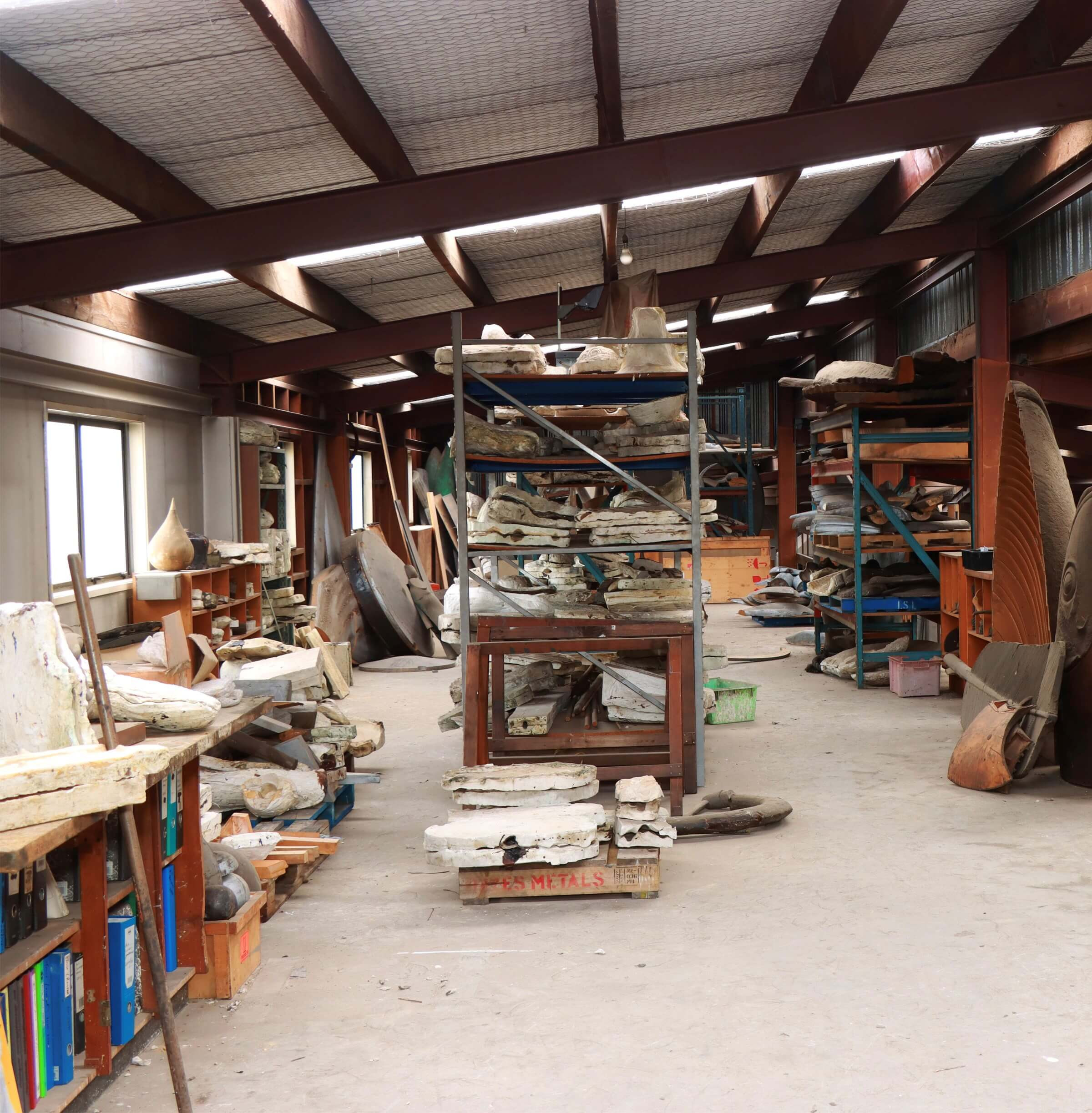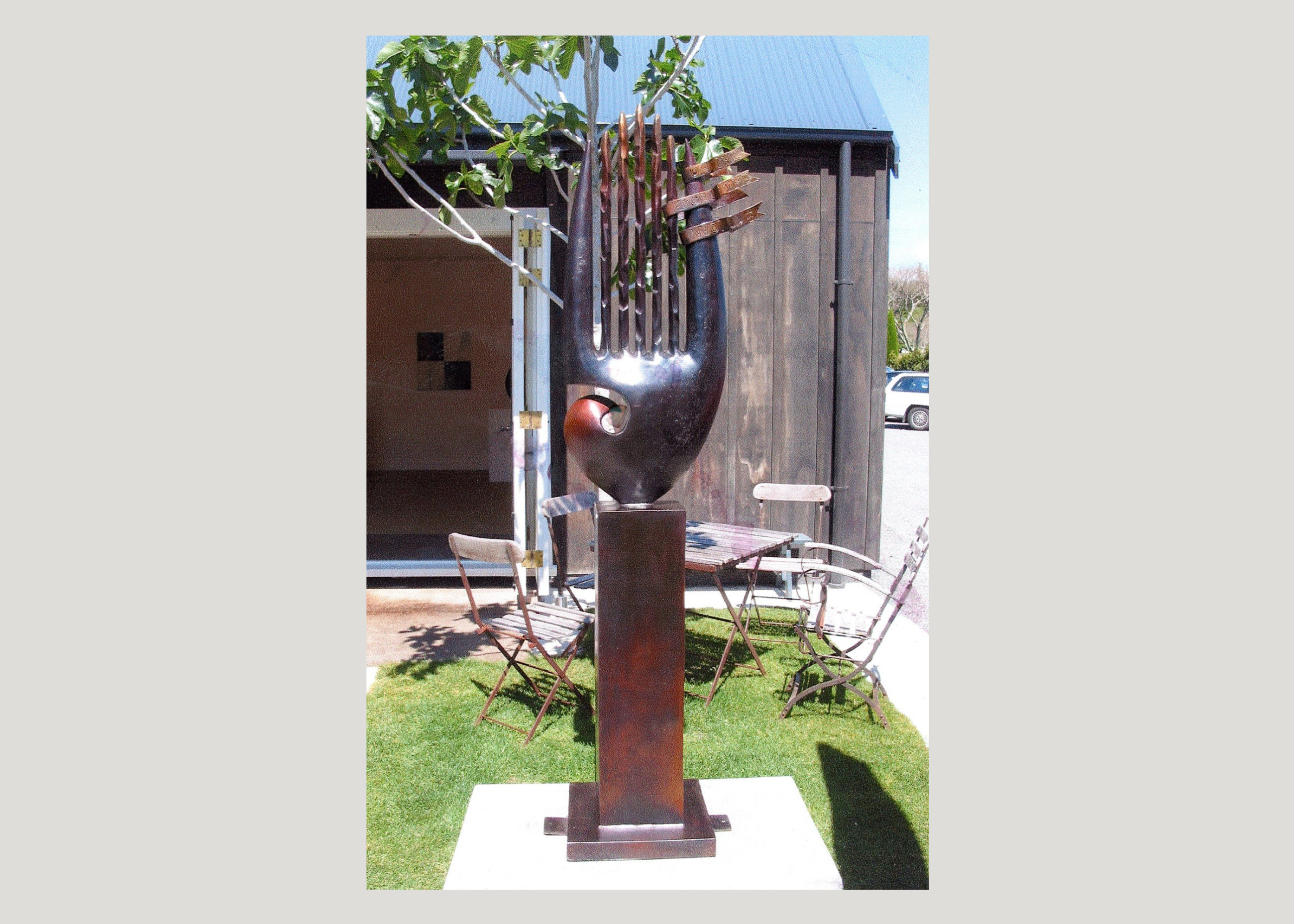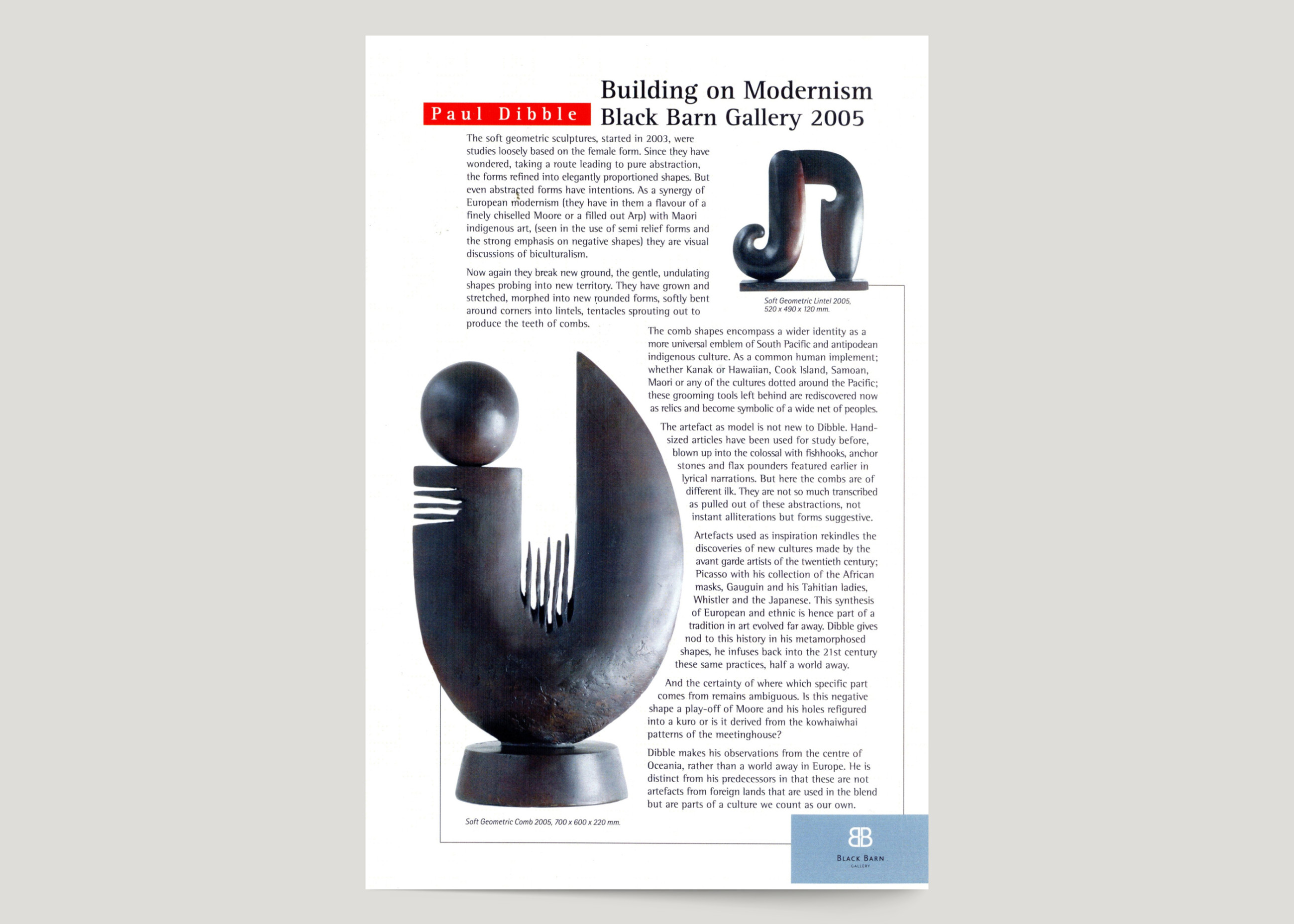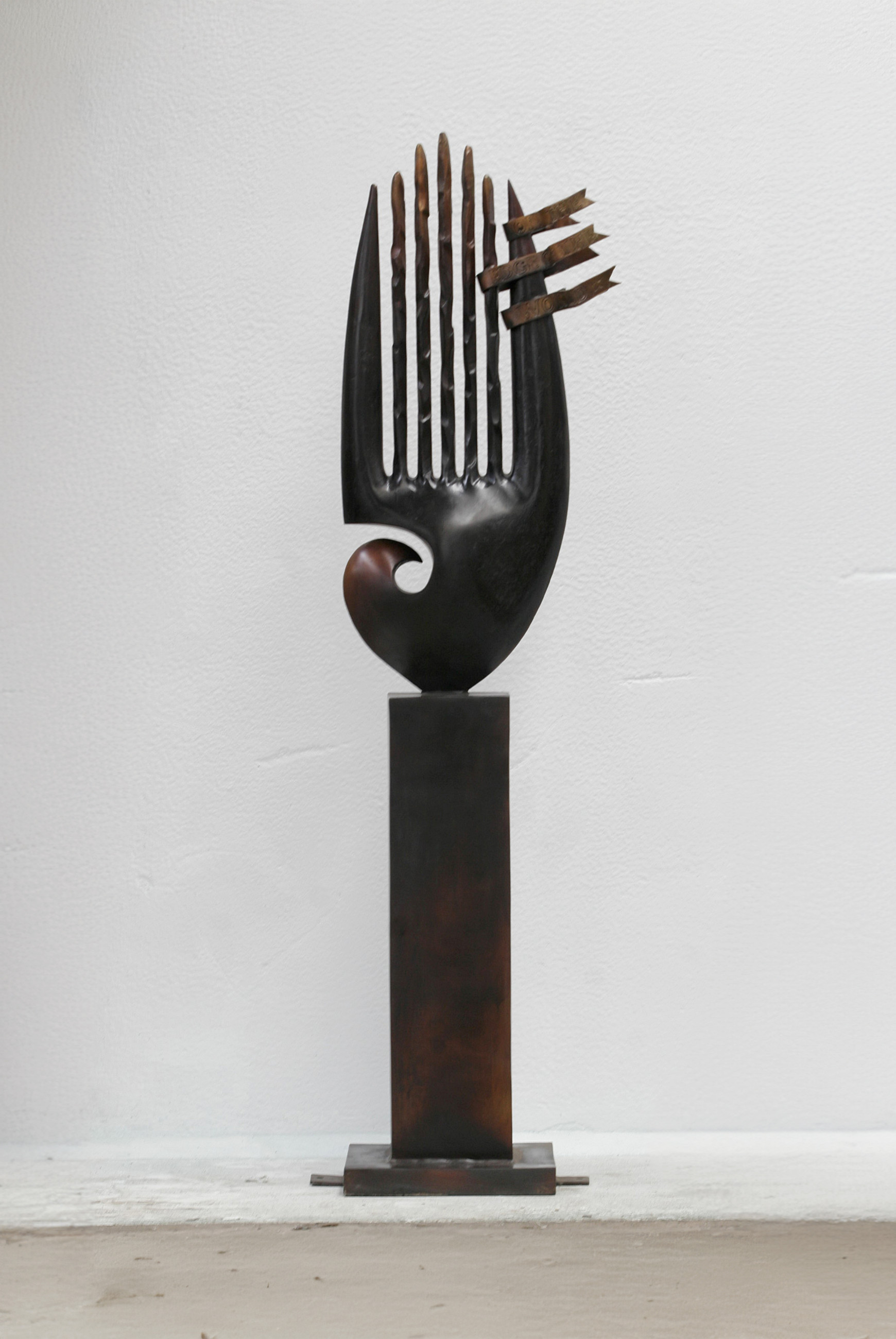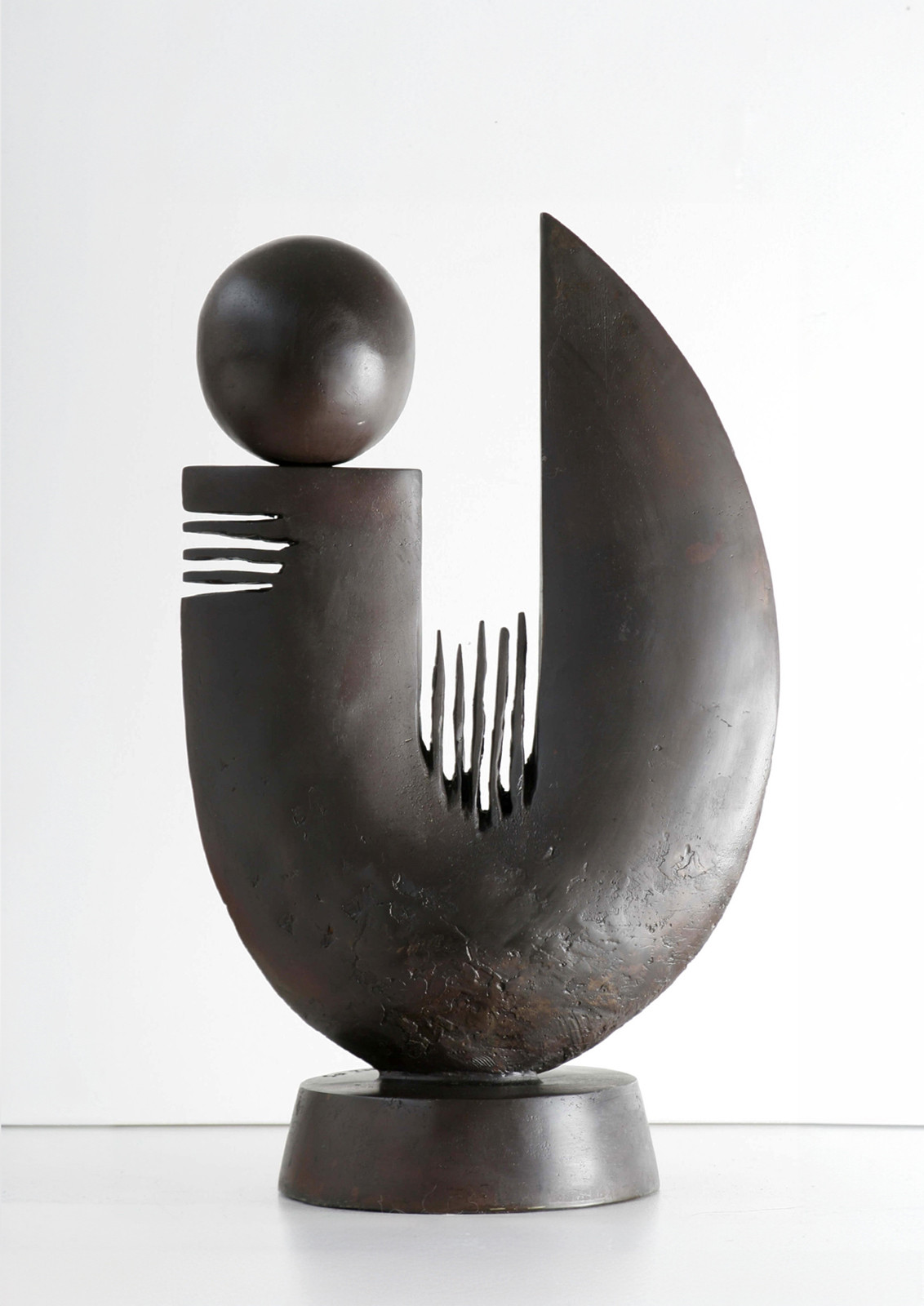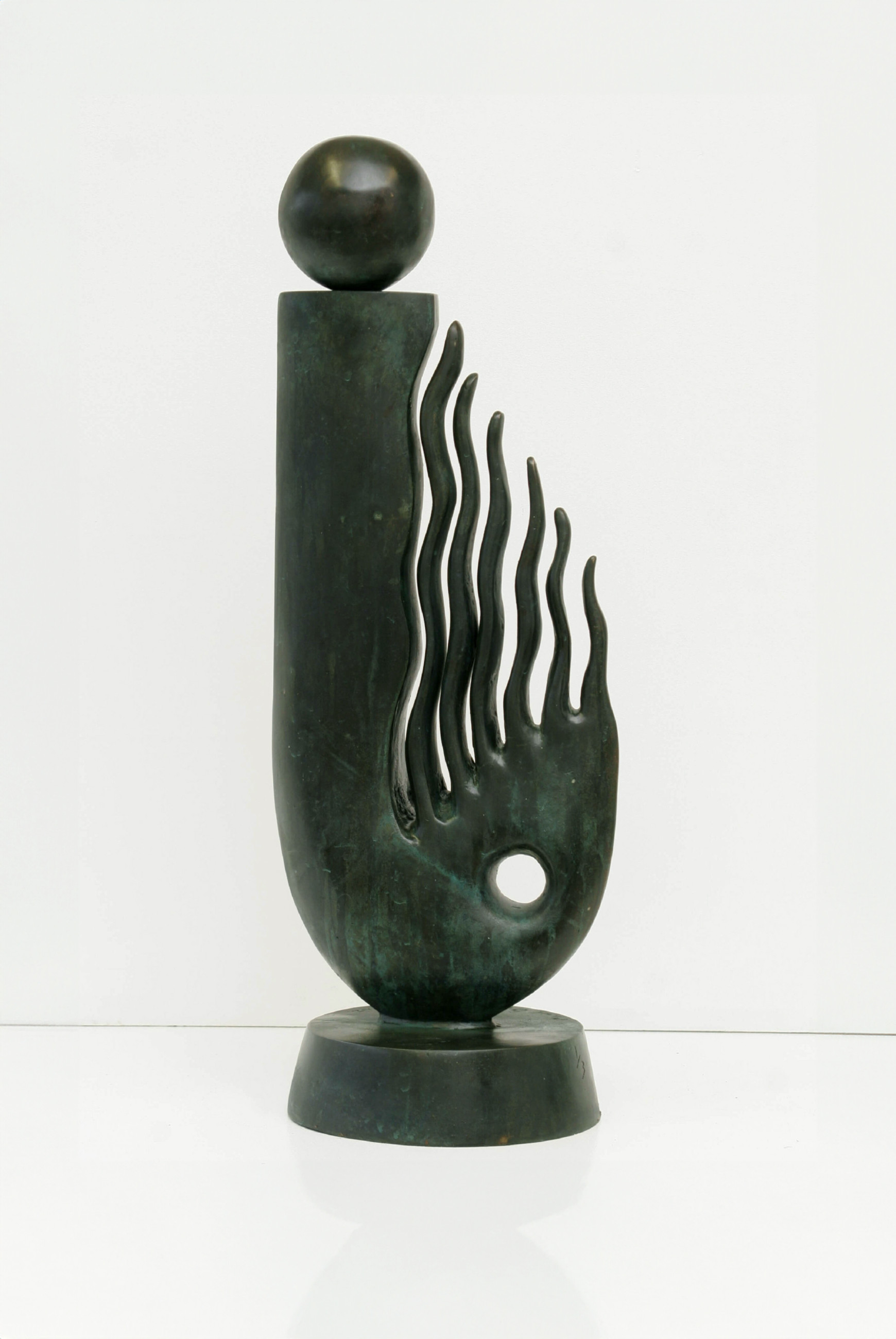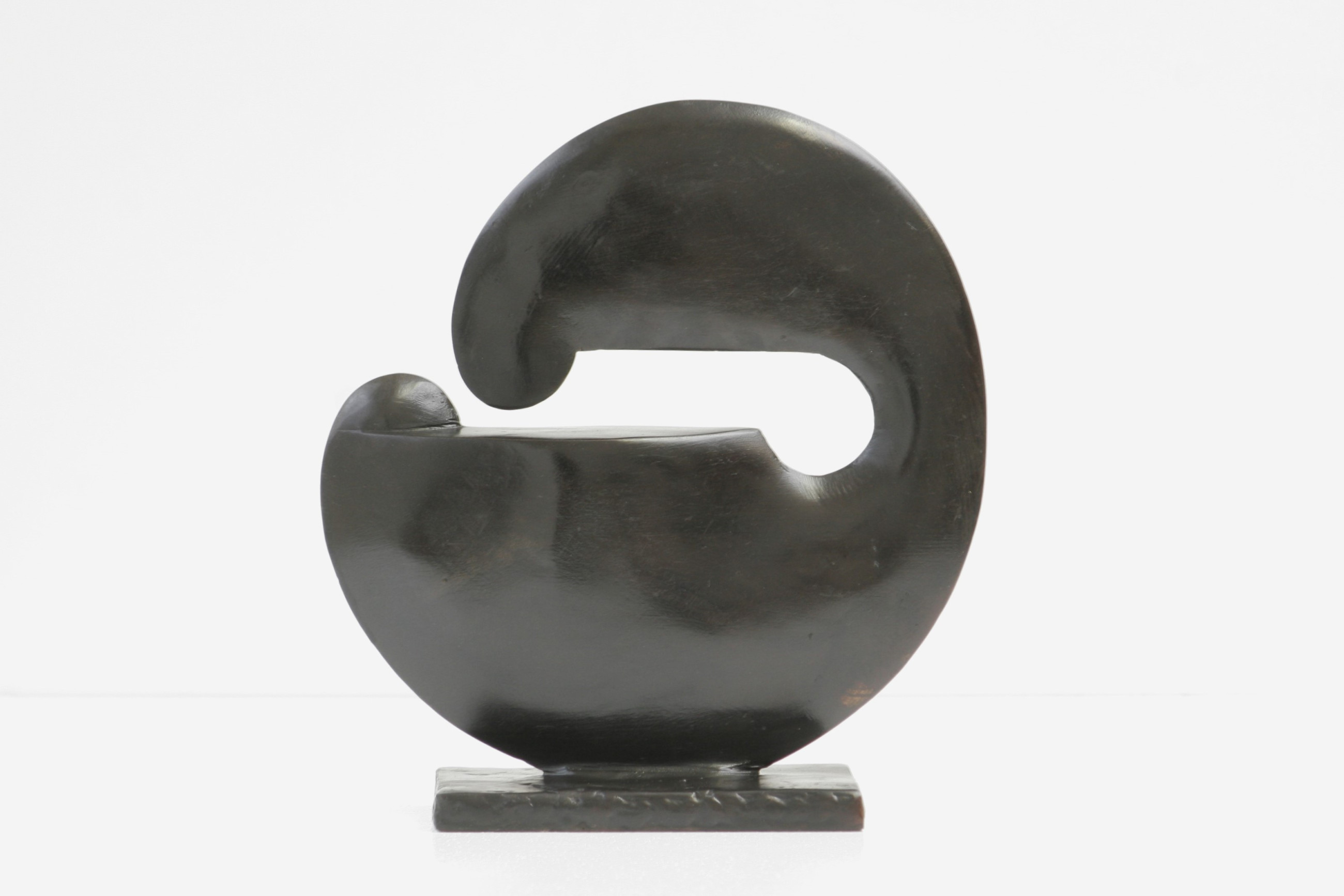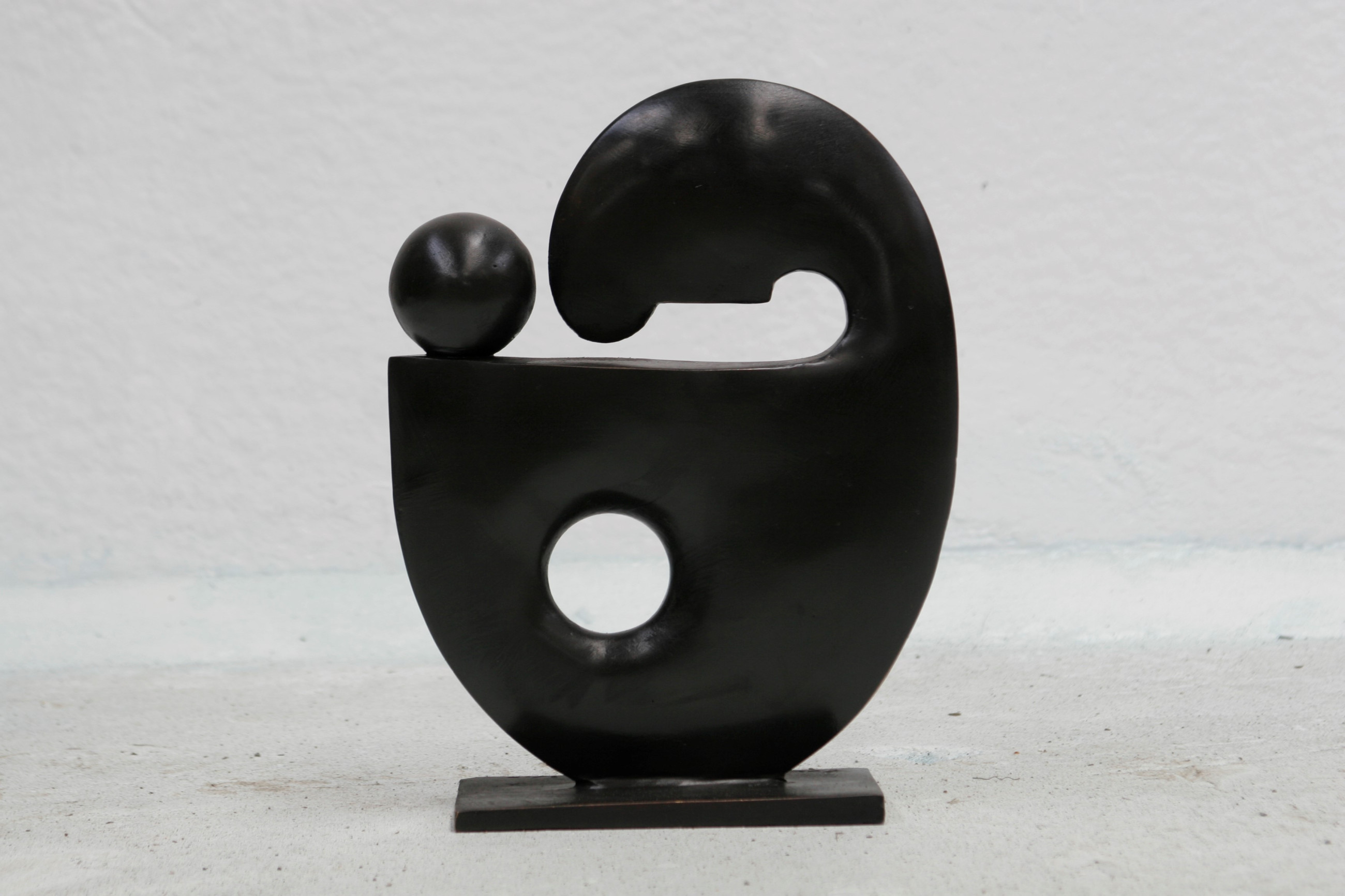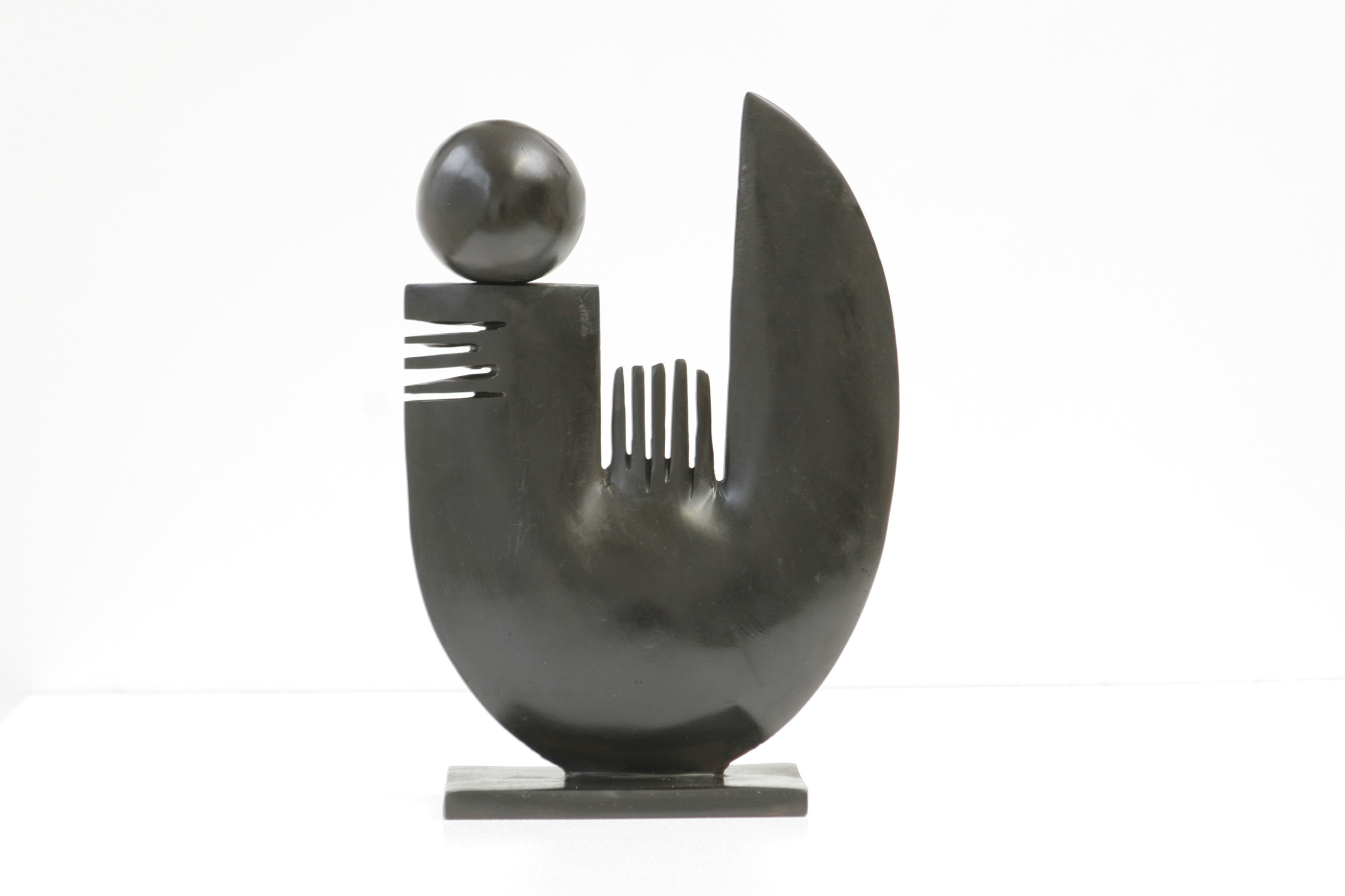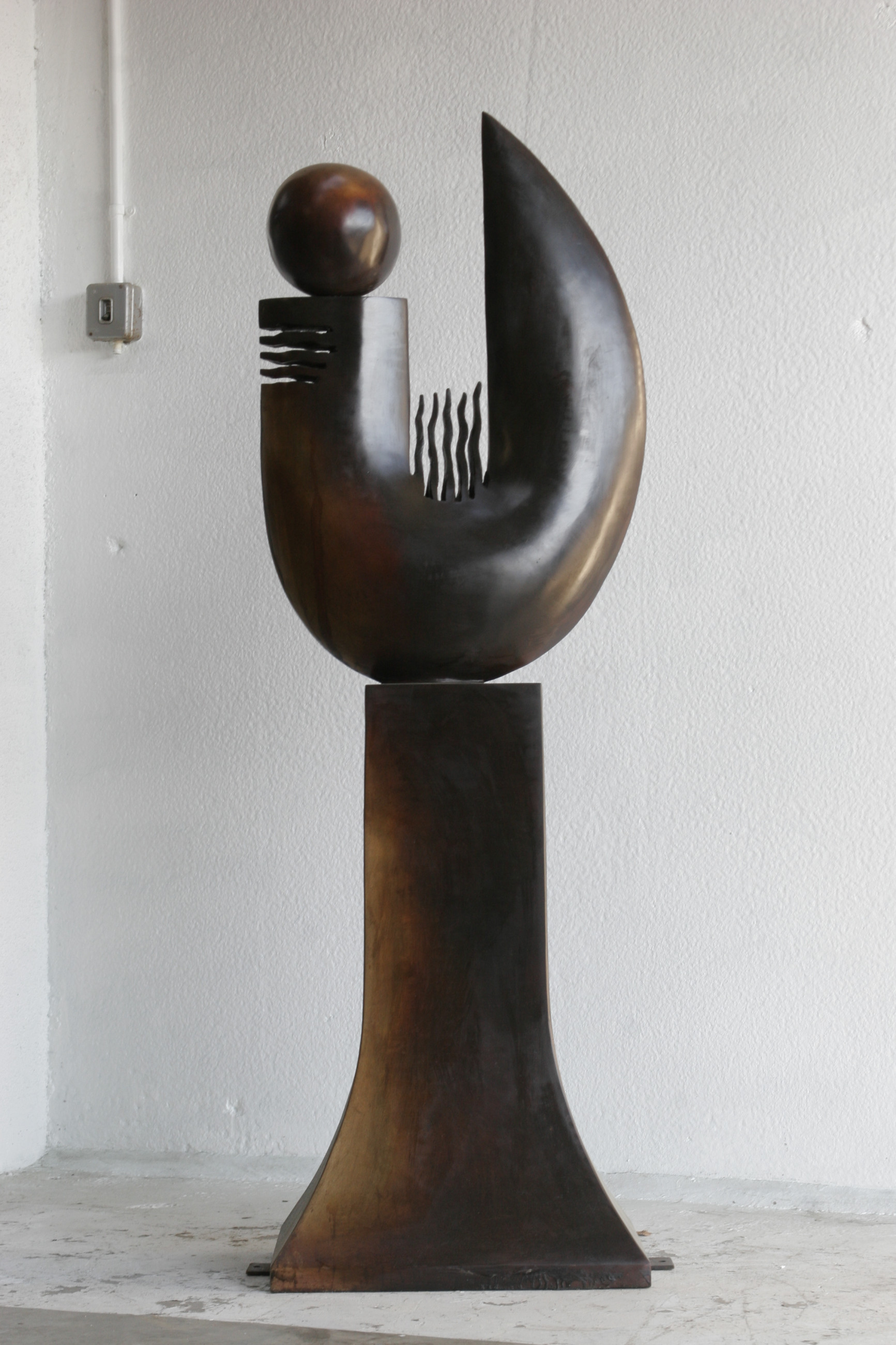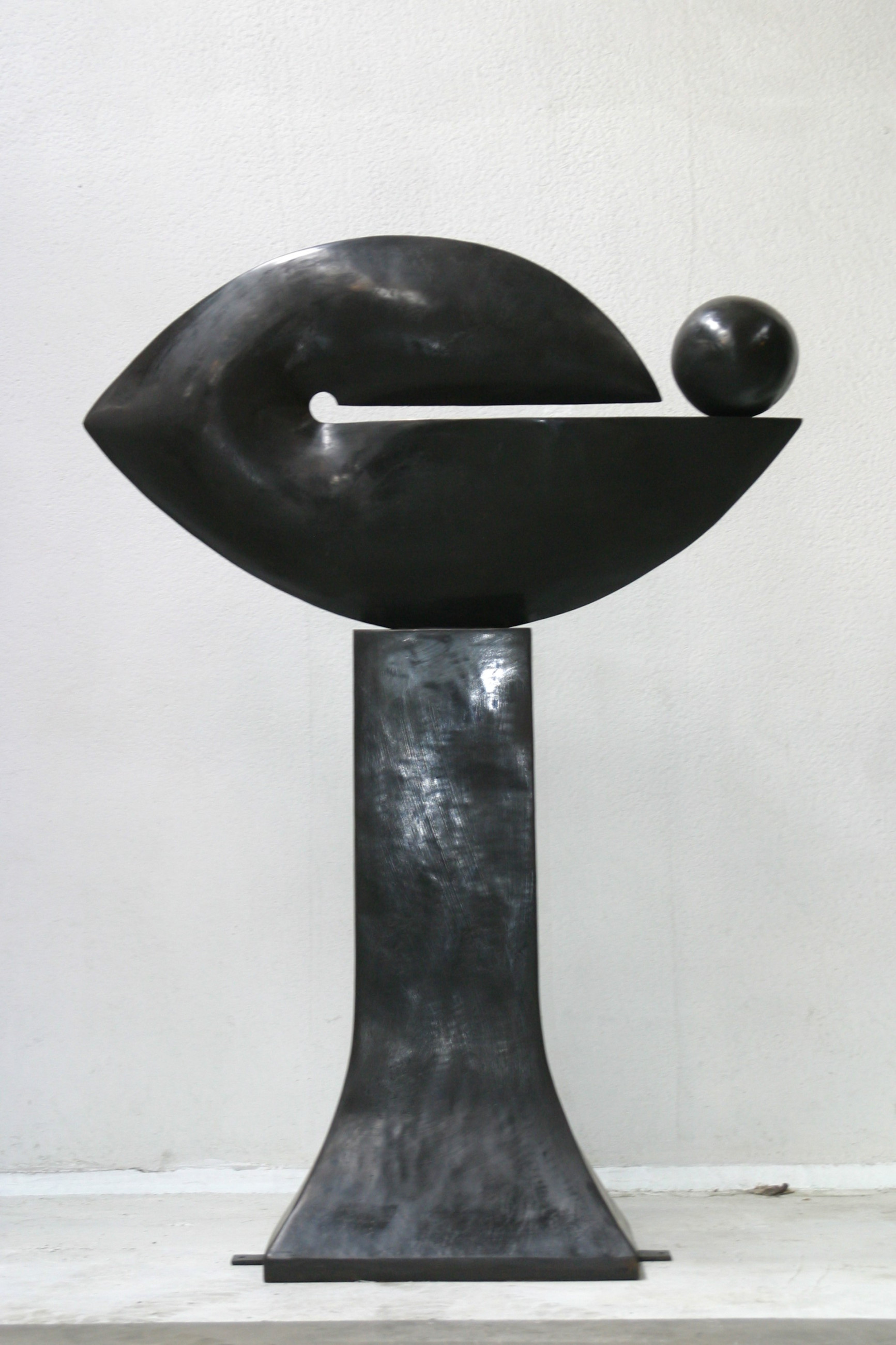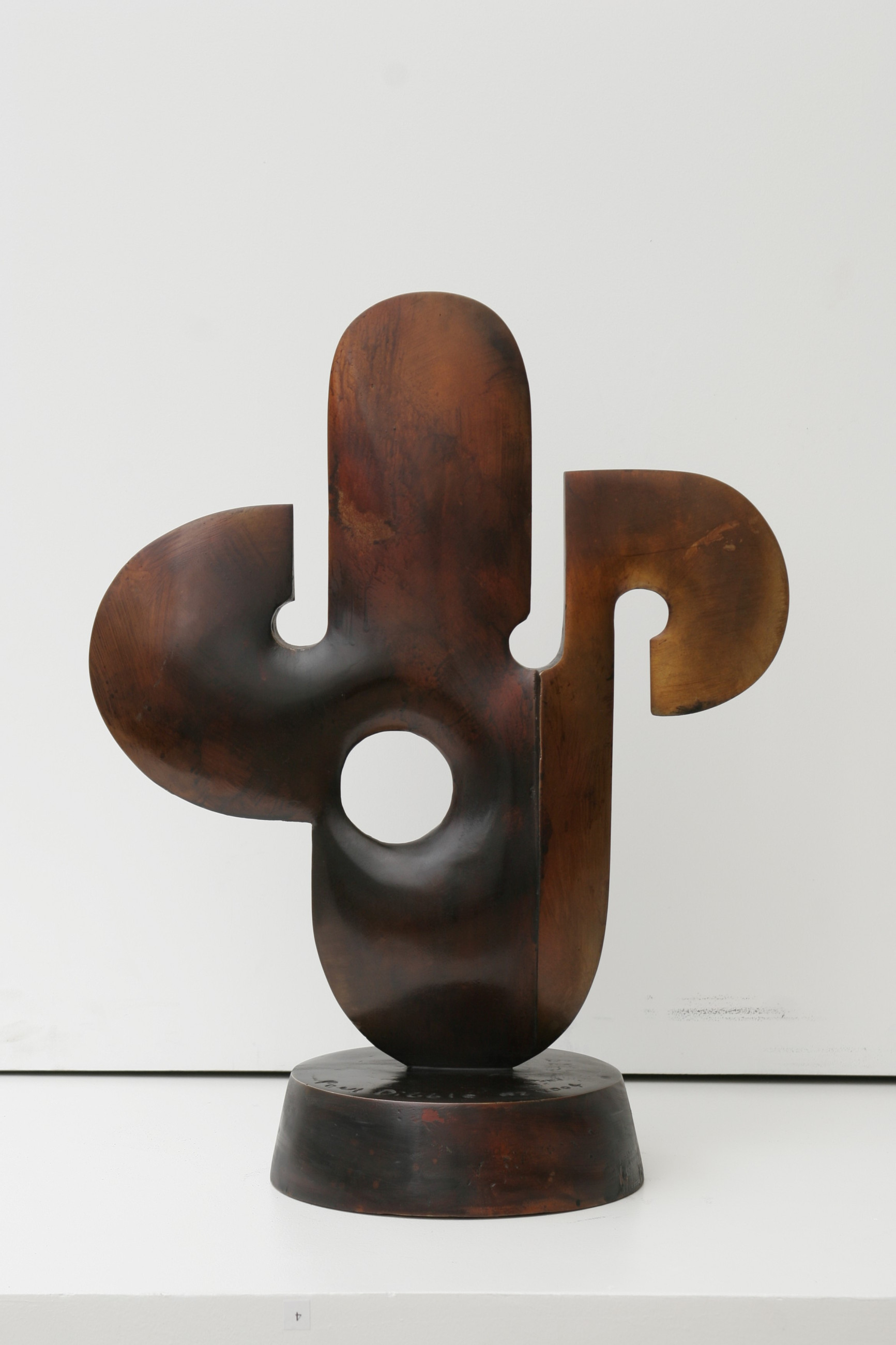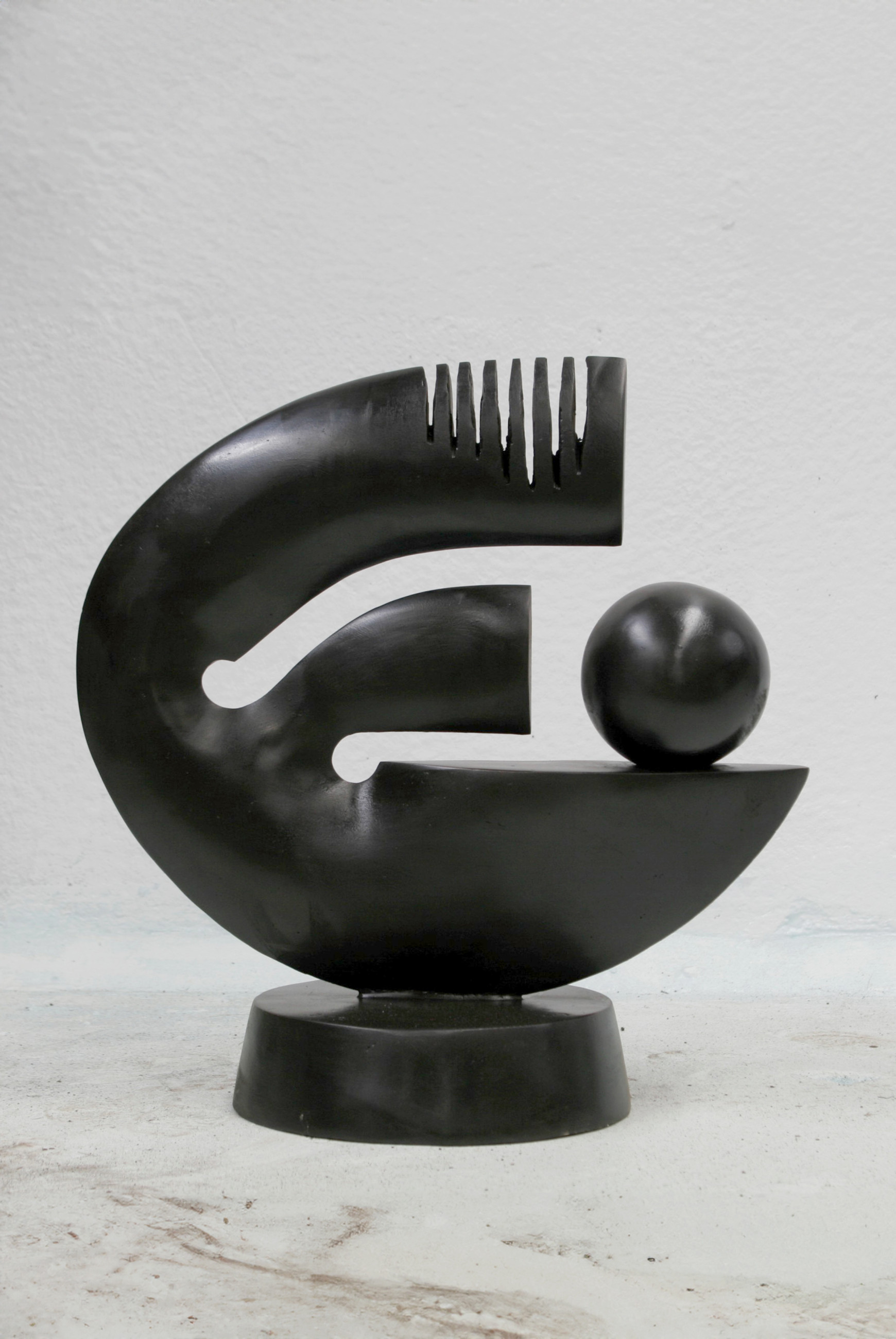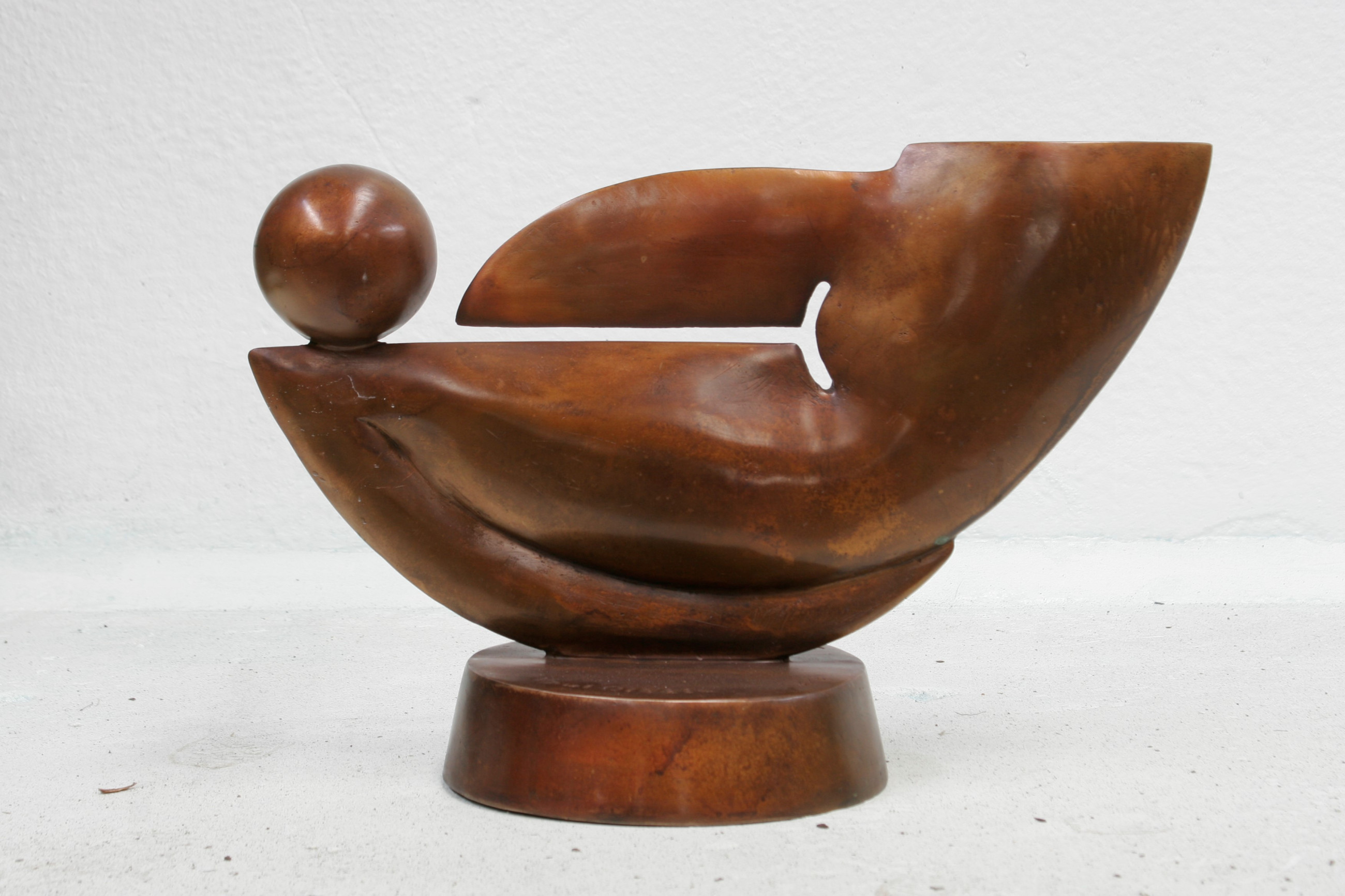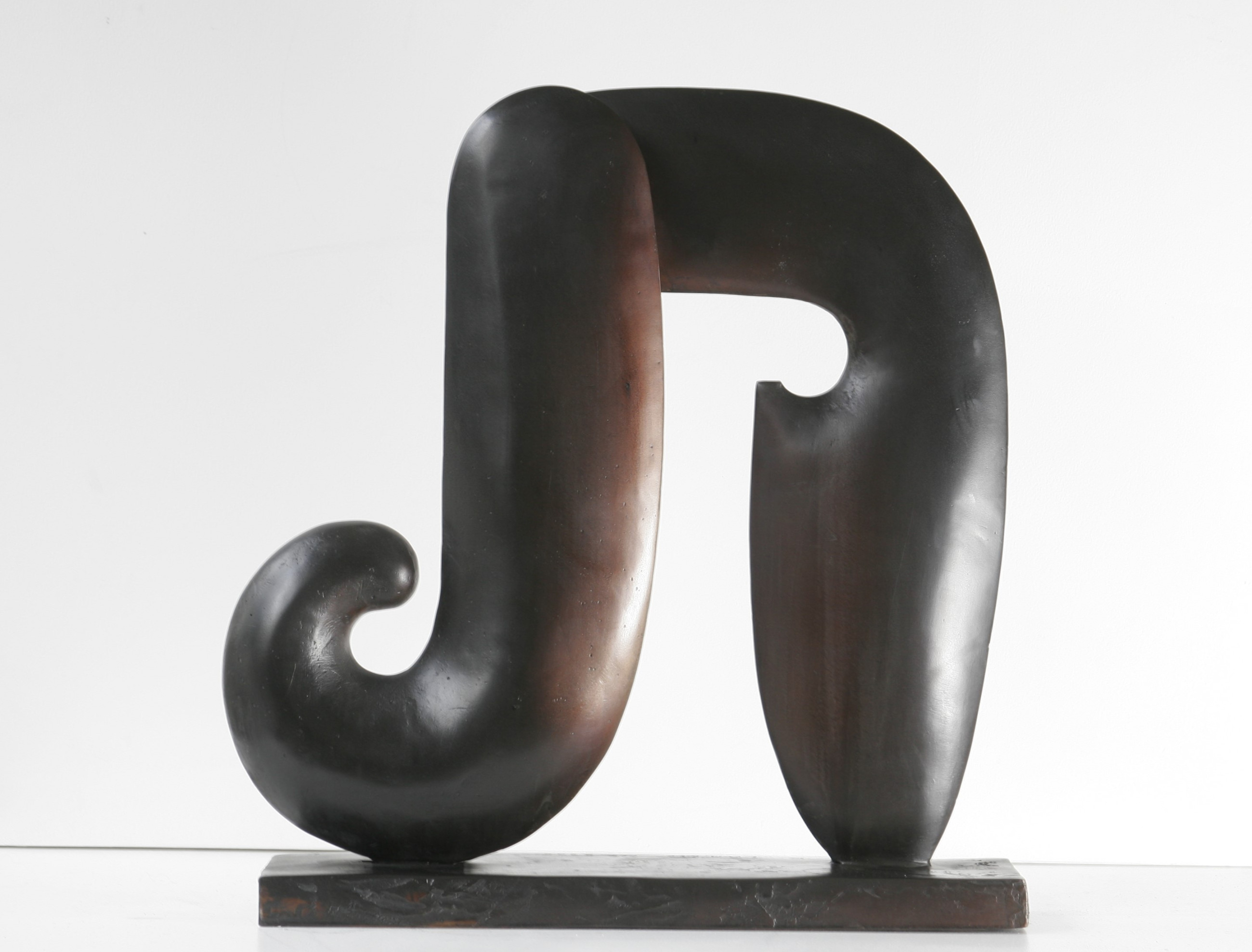August 1 - August 1, 2005 Building on Modernism
August 1 - August 1, 2005 Building on ModernismSolo, Black Barn Gallery, Havelock North
Text
The soft geometric sculptures, started in 2003, were studies loosely based on the female form. Since they have wandered, taking a route leading to pure abstraction, the forms refined into elegantly proportioned shapes. But even abstracted forms have intentions. As a synergy of European modernism (they have in them a flavour of a finely chiselled Moore or a filled-out Arp) with Māori indigenous art, (seen in the use of semi relief forms and the strong emphasis on negative shapes) they are visual discussions of biculturalism.
Now again they break new ground, the gentle, undulating shapes probing new territory. They have grown and stretched, morphed into new rounded forms, softly bent around corners into lintels, tentacles sprouting out to produce the teeth of combs.
The comb shapes encompass a wider identity as a more universal emblem of the South Pacific and antipodean indigenous culture. As a common human implement, whether Kanak or Hawaiian, Cook Island, Samoan, Māori or any of the cultures dotted around the Pacific, these grooming tools left behind are rediscovered now as relics and become symbolic of a wide net of peoples.
The artefact as model is not new to Dibble. Hand-sized articles have been used for study before, blown up into the colossal with fishhooks, anchor stones and flax pounders featured earlier in lyrical narrations. But here the combs are of different ilk. They are not so much transcribed as pulled out of these abstractions, not instant alliterations but forms suggestive.
Artefacts used as inspiration rekindles the discoveries of new cultures made by the avant-garde artists of the twentieth century: Picasso with his collection of African masks, Gauguin and his Tahitian ladies, Whistler and the Japanese. This synthesis of European and ethnic is hence part of a tradition in art evolved far away. Dibble gives nod to this history in his metamorphosed shapes, he infuses back into the 21st century these same practices, half a world away.
And the certainty of where which specific part comes from remains ambiguous. Is this negative shape a play-off of Moore and his holes refigured into a koru or is it derived from the kowhaiwhai patterns of the Māori meeting house?
Dibble makes his observations from the centre of Oceania, rather than a world away in Europe. He is distinct from his predecessors in that these are not artefacts from foreign lands that are used in the blend but are parts of a culture we count as our own.
